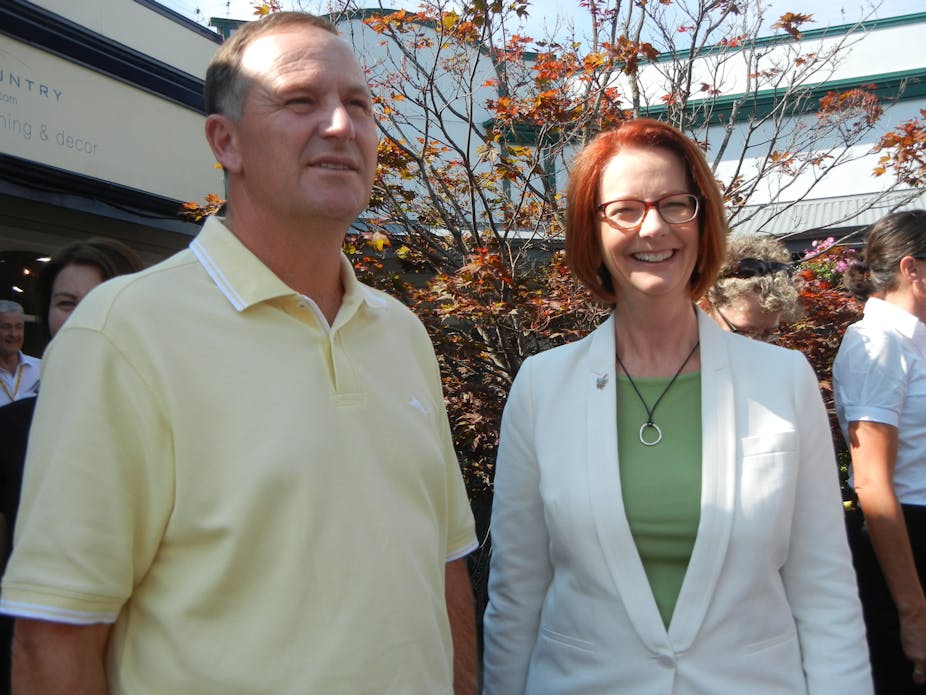In March this year Australia and New Zealand will celebrate the 30th anniversary of a trade agreement known as Closer Economic Relations (CER). Few Australians and New Zealanders are likely to notice. Yet the agreement has fundamentally changed the relationship. It has had significant domestic implications, and has paved the way for an advanced single economic market.
Over the weekend, Prime Minister Julia Gillard met her New Zealand counterpart John Key in Queenstown. Economic integration was on the agenda, but it was the announcement that New Zealand had agreed to re-settle 150 refugees subject to Australia’s offshore processing regime that stole the headlines.
Perhaps the other meeting outcomes – on trans-Tasman travel, the implementation of an investment protocol, measures on superannuation portability, and the empowerment of regulators to tackle exorbitant trans-Tasman roaming charges – seemed underwhelming. In fact, the outcomes are consistent with the incremental approach, which has been typical of trans-Tasman relations over three decades. It has served the integration process well.
Conspicuously absent from the meeting outcomes, however, was any response to the recent joint Productivity Commission report on the economic relationship. When Gillard and Key met in February 2012, they agreed that the two Commissions should scope out possibilities for further steps in the relationship. The terms of reference were broad, and the final report largely endorsed the incremental approach. It proposes 30 measures to reduce remaining barriers to the movement of services, capital and people across the Tasman.
It also notes that the “end point” of integration cannot be specified in advance. It recommends further consideration of two issues with distinctly political implications: mutual recognition of dividend imputation/franking credits and Australia’s decision 10 years ago to limit social security for New Zealanders living here.
Business and investors’ representatives have raised the issue of mutual recognition of imputation and franking credits since the original discussions leading to CER. It concerns whether income earned on investments in the other country is subject to double taxation.
Presently, investors can deduct corporate taxes from taxes they pay on distributed corporate income for domestic investments. Income earned from investment in the other country, however, is subject to double taxation. This situation distorts the return on capital and, therefore, obstructs creation of unified trans-Tasman capital markets.
Mutual recognition would be an important step toward completing the single market. It would provide a clear benefit to investors. As the report states, it could also lead to a net transfer of income from Australia to New Zealand.
Now consider the impact integration has had on New Zealanders living and working in Australia. Since 1973, the Trans-Tasman Travel Arrangement has permitted citizens of one country to live and work with few restrictions in the other country.
In 2001 Australia introduced restrictions to resident New Zealanders’ access to certain social benefit payments and naturalised citizenship. These policies disadvantage many New Zealanders drawn by employment opportunities to Australia. Many find themselves without a social safety net.
The barriers to citizenship are prohibitively high. Labour market integration and welfare segregation potentially institutionalises their status as second-class citizens in Australia. There is no easy way for either of these issues to be resolved.
We have heard a lot about economic integration lately, especially in Europe, where the implications of it failing are far-reaching. Australia and New Zealand have never created a customs or currency union. They are unlikely to do so any time soon. However, they have quietly removed many barriers to the movement of goods, services, capital and people. Integration across the Tasman has so far proven resilient – although not immune – to political conflict.
As the single market project advances faster than the two political communities unite, the mix of distributional politics and national identity is likely to test this resilience.
The recent report presents both governments with an opportunity. Without discarding the pragmatic approach that has worked so well, it is time to acknowledge that economic integration has consequences.
It impacts the distribution of wealth within and between the two societies as well as the rights of citizens. If one lesson can be drawn from European experience it is that economic integration has a habit of turning political. The agenda might not look riveting, but it might be time we started paying attention.

